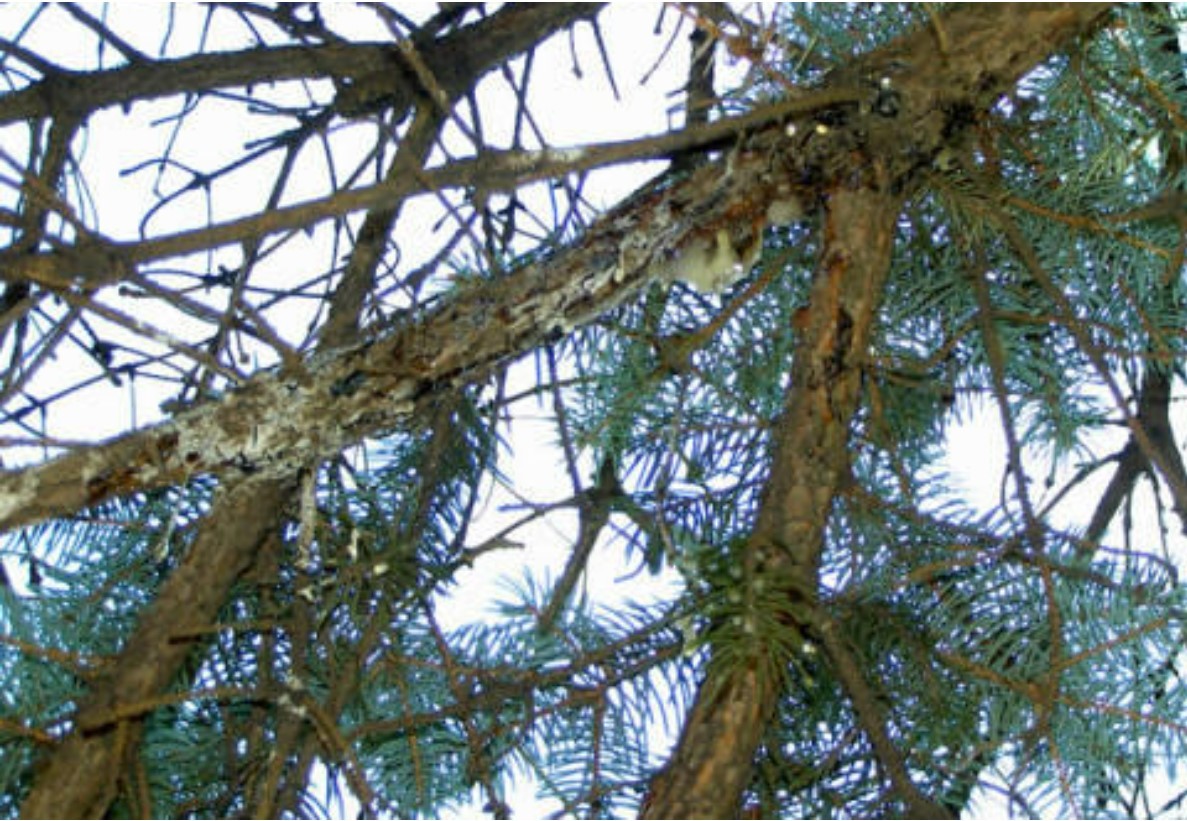This disease affects white, Colorado (blue), as well as other spruce and is caused by the fungus Cytospora kunzei. It is becoming increasingly common in the urban forest, as it usually targets more mature trees 15 – 20 years and older, and 3 meters or greater in height. Trees that are suffering from stress are most vulnerable to the disease. This stress can come in forms such as drought, pest and insect infestations (i.e. spider mites), soil compaction, lack of available root zone for further growth, and other environmental factors.
Sign and Symptoms
The earliest and most visible signs of the fungus are the dying of a lower branch, signified by discoloration and then needle browning. The needles may remain on the branch or may fall off. As the disease progresses over the years, it spreads to higher branches. If left unchecked, the tree can eventually die from the canker. The cankers themselves are not initially visible, as there is no major bark
damage or color change. Resin (sap) flow is quite often a sign of the disease and the white or grey dried patches of resin are very noticeable. This is not a guaranteed method of diagnosis however, as resin flow can be present at any injury that damages the bark.
Prevention
Sanitation
- The first step in the control of Cytospora canker is sanitation – the removal of the infected branches. Once a branch is infected, there is no treatment available to save it. It must be pruned off, preferably at the main stem. The diseased branch should then be destroyed as the spores can still be released from the canker and spread to healthy trees.
Watering & Fertilizing
- Your trees can be kept healthy by watering and fertilizing. Click here to learn more about watering.


Tree Health Issues
Wondering about costs?

